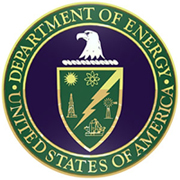 Edgard Espinosa (Mechanical Engineering) About DOE Fellow: Mr. Espinosa is continuing his efforts to support a private DOE contractor, NuVision Engineering, Mooresville, NC, to develop a computational fluid dynamic (CFD) model to validate the test experiment of Power Fluidics. The technology is set to detach and discard the upmost quantity of sludge material formed and found at Savannah River Site (SRS) high level waste tanks. This task has close ties to his thesis entitled, “Design Optimization of Submerged Jet Nozzle to Enhance Mixing”. The experiment will investigate optimized nozzle designs to generate improved flow patterns which would circulate an acid solution effectively and introduce high shearing forces at the low levels of the tank. |
| DOE Related Projects: |

Figure 1 Pressure degradation analysis along pipeline. |
Chemical Process alternatives for radioactive waste – Waste Slurry Transport Organization
Mr. Espinosa is contributing to the project by performing necessary analysis on the fluid and solid interaction. The analysis consists of understanding the underlying physics which causes the unplugging of the pipeline. The technology being considered will be tested and deployed at DOE Transfer sites to assist with problematic plugged pipes. Capturing the physics and modeling would allow better comparison of the experimental values with the values projected by the model. This will provide some indication whether the technology tested at FIU’s facility would benefit pipelines as long as 19,000 ft as seen at DOE’s Hanford Site.
Waste and D&D Engineering Technology Development
DOE is looking into technologies which could be used to apply fixatives to Hot Cells at Oak Ridge National Laboratory to reduce radioactive contamination. ICM has developed a system consisting of a robotic sprayer that can climb walls vertically. The technology is used to spray a fixative on the interior walls of a Hot Cell for demolition. Edgard took part in the design, setup, and data acquisition during the testing.
 Figure 2 Hot Cell Mockup with yellow radiation tent |
 Figure 3 Robotic Sprayer at work |
| Presentations |
